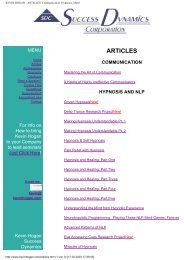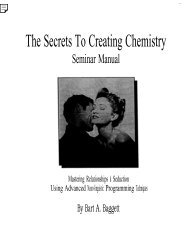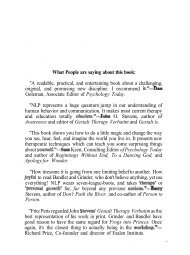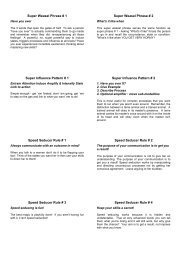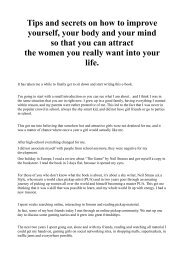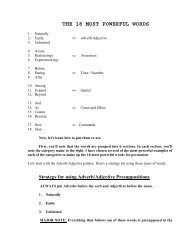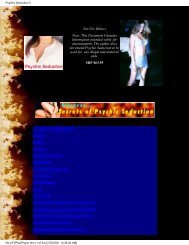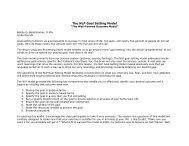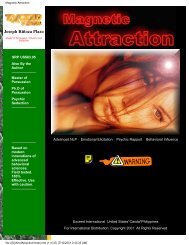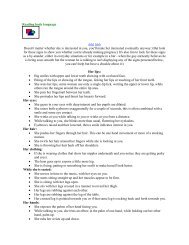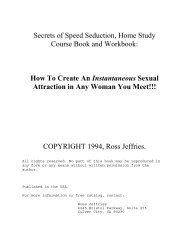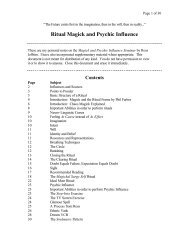A Pragmatic Guide To Communication & Change.pdf - NLP Info Centre
A Pragmatic Guide To Communication & Change.pdf - NLP Info Centre
A Pragmatic Guide To Communication & Change.pdf - NLP Info Centre
- No tags were found...
You also want an ePaper? Increase the reach of your titles
YUMPU automatically turns print PDFs into web optimized ePapers that Google loves.
- precise diligent study of the issues.<br />
2. During an argument, I am most likely to be influenced by: - the other person's tone of<br />
voice.<br />
- whether or not I can see the other person's point of view.<br />
- the logic of the other person's argument.<br />
- whether or not 1 feel I am in touch with the other person's true feelings.<br />
3. 1 most easily communicate what is going on with me by: - the way I dress.<br />
- the feelings I share. - the words I choose. - my tone of voice.<br />
4. It is easy for me to:<br />
find the ideal volume and tuning on a stereo system. - select the most intellectually<br />
relevant points concerning an interesting subject.<br />
select superbly comfortable furniture. -. select rich color combinations.<br />
I34<br />
color of your first car?"<br />
People access all the time. Once you get used to the concept and its uses, you will find<br />
that it is usually unnecessary to go through the formal mapping process. Many people will<br />
give you all the information you need during the course of a normal conversation.<br />
APPENDIX A<br />
CONSTRAINTS ON OUR MODELS OF THE WORLD<br />
13.5<br />
The diagram which follows illustrates the three constraints which affect the construction<br />
of our models of the world. As discussed in Chapter 1, we start with the "raw materials"<br />
of experience. These are channeled via our sensory organs through our neurological<br />
filters. At any moment in time, we have available to us one complete 4Tuple which<br />
includes an experience of sight, feeling, sound, taste and smell.<br />
From there, our experience is further modified by language and other social filters<br />
which either enhance our perception or diminish it.<br />
Finally, our great body of stored memories create an individual filter which further<br />
modifies our perception, sometimes by heightening and other times by obscuring the<br />
original sensory data. This internally generated experience can take the place of any of the<br />
four parameters of the 4-T at any moment in time. The completed 4-T with its<br />
combination of experiences of external and internal origins is then shuttled into memory,<br />
where it may be called upon to modify future experiences as they arise.<br />
132<br />
Of course, this hierarchy testing leaves out the digital representational system. A<br />
"digital" will be more likely to score auditory and visual over kinesthetic. However, a<br />
"digital" will also tend to score visual over auditory, while an "auditory" will tend to<br />
score auditory over visual. In any event, it is important to take into consideration all<br />
aspects of a person's communicative output. The mapping skills described above are only<br />
one of the ways to facilitate understanding and determine which system of communication<br />
to use in order to obtain the rapport and trust necessary for influential<br />
communication. For more on identifying a person's hierarchy, see Appendix B.<br />
The Visual Model provides us with a format for seeing, understanding and utilizing<br />
consistent patterns of observe able behavior. Based in part on research and pragmatic



